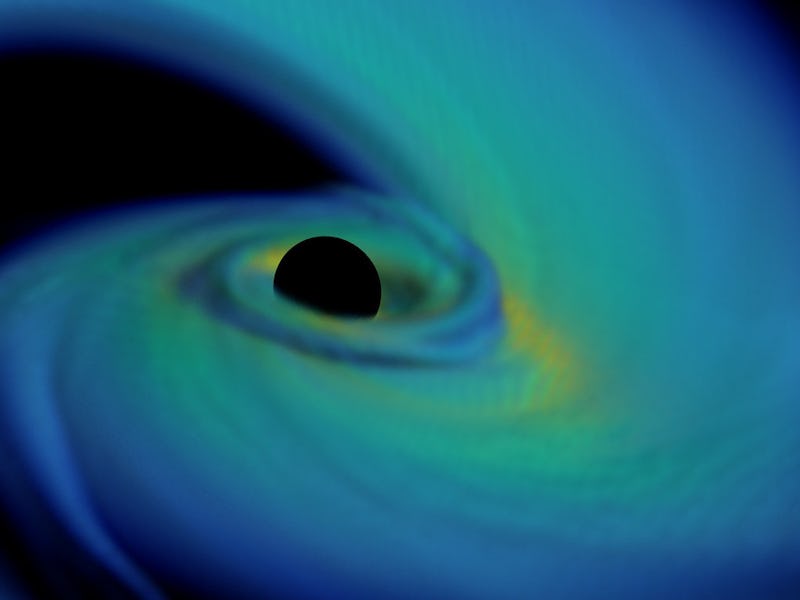How Scientists Are Watching Neutron Stars Smash into Black Holes
The miracles of the digital age.

The ability to detect gravitational waves has been a boon for observing the clobbering spectacle of two black holes slamming into one another. We’ve had three opportunities to “watch” this event unfold now. But that’s just one type of event physicists want to use the signatures of these waves to watch. They also want to look at neutron stars, ultra-dense objects that are more than 10 times the mass of the sun yet as little as six miles across. Collisions involving these objects would surely be a sight to behold.
So some scientists have wondered: What happens when you crash a neutron star with a black hole? Where might these crashes happen? And what might the gravitational waves produced in the aftermath look like?
A simulation of a neutron star-black hole merger, in 43 milliseconds (43 thousandths of a second).
We have to yet to actually see such a merger happen, but thanks to scientists at the Department of Energy’s Lawrence Berkeley National Lab, we have an idea of what it might look like. In a group of new studies published in the journal Classical and Quantum Gravity, the Berkeley Lab physicists detail a series of computer simulations they ran which illustrate exactly what a neutron star smashing into a black hole might look like. The results help shed light on the kinds of gravitational waves, gamma rays, and radioactive matter such an event would vomit up into the rest of space.
There’s a lot to take away from the new studies, but one of the most interesting has to do with the type of matter that’s formed because of the merger. According to the simulations, that matter would include gold, platinum, and a slew of radioactive and heavy elements. If that’s true, that material would help characterize the insides of neutron stars in a way scientists have never before determined.
“We are steadily adding more realistic physics to the simulations,” said Francois Foucart, lead author for one of the studies and a postdoctoral researcher at Berkeley Lab’s Nuclear Science Division, in a news release. “But we still don’t know what’s happening inside neutron stars. The complicated physics that we need to model make the simulations very computationally intensive.”
Another animation of a simulated merger of a black hole and neutron star
In some simulations, the exotic matter caked into the core of a neutron star might be lost completely to the black hole. In others, it could be coughed up and allowed to strew about into the rest of outer space.
Of course, we won’t be able to actually determine what this looks like until we can finally observe the aftermath of black hole-neutron star mergers. The simulations give some clue as to what scientists should be on the lookout for when scanning the sky for these crashes.
According to Foucart, the increased sensitivity of gravitational wave-measuring instruments could make it possible to detect signals created by even tiny interactions on the surface of a neutron star, and not just gigantic collisions between objects. “This could also allow us to observe events that we have not even imagined,” he said.